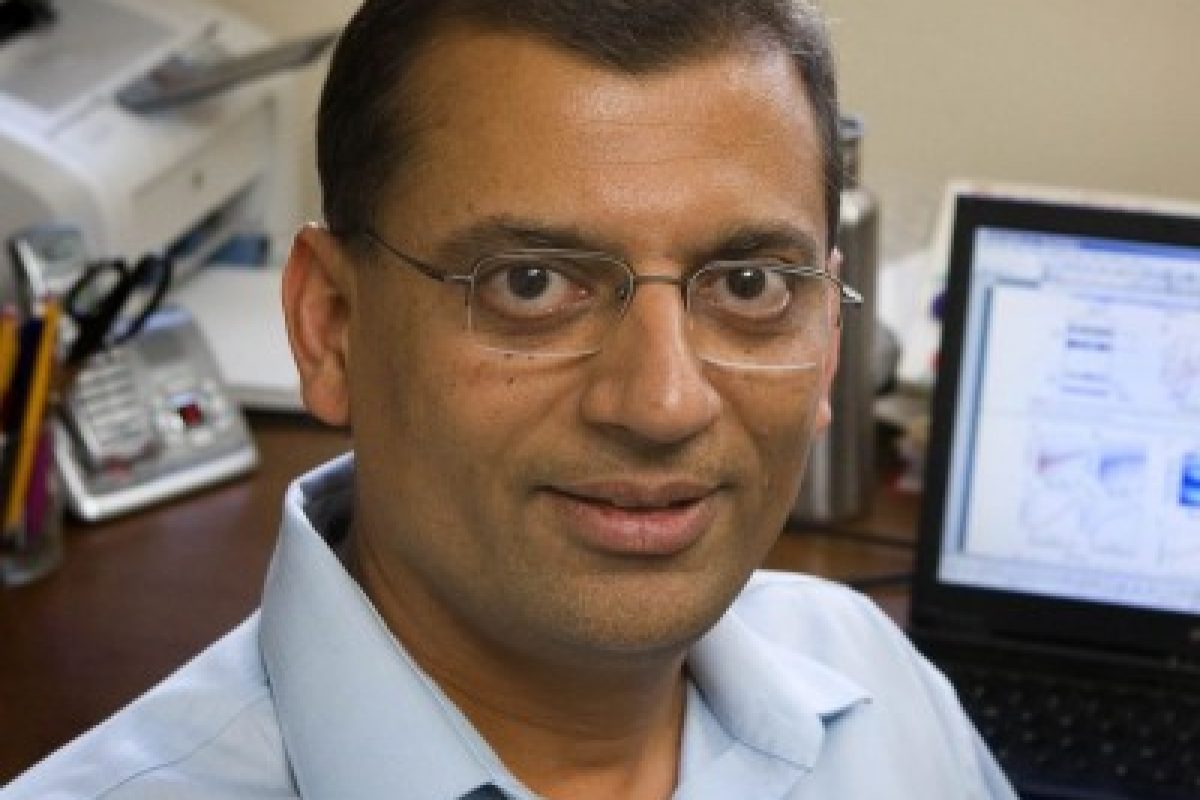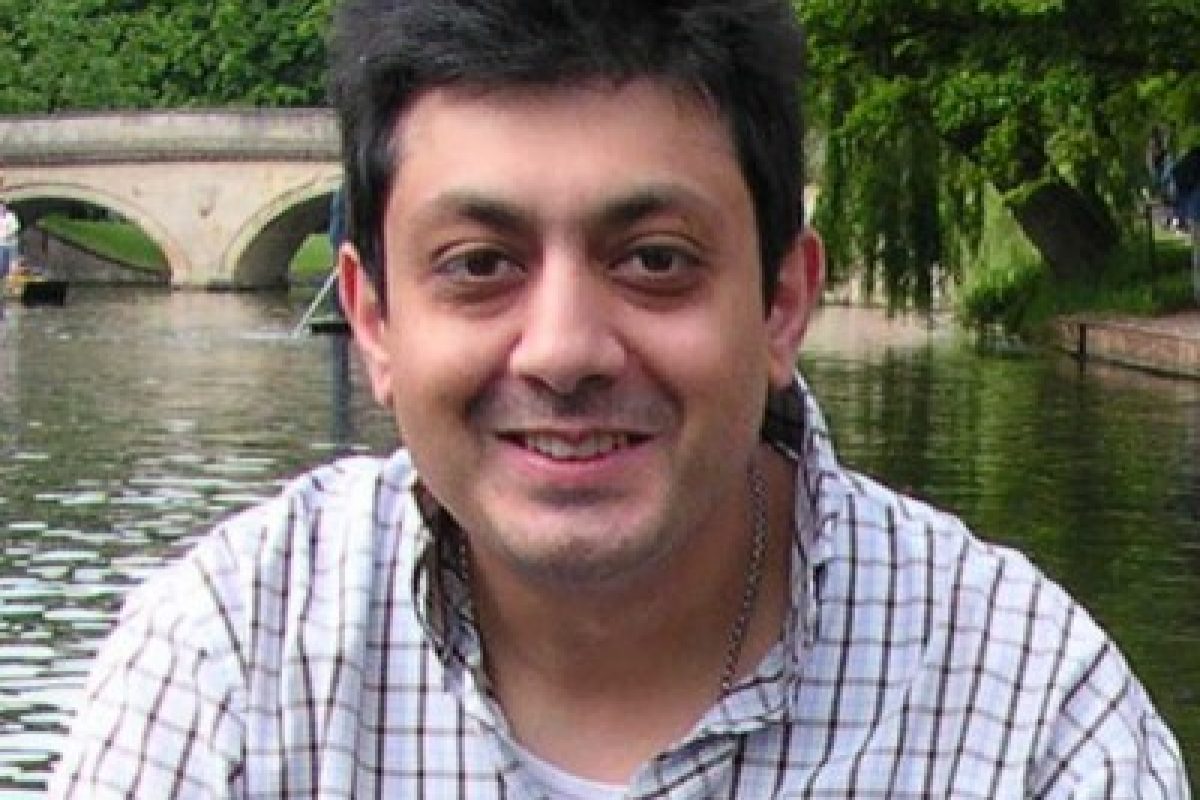Research
Dr. Sampath is an internationally known visual neuroscientist who is recognized as a leader in the study of cellular and circuit level visual processing. His work focuses on signal transmission between photoreceptor cells, the rods and cones, and bipolar cells to determine how information is processed within retinal circuits and gives rise to visual perceptual sensitivity. Not only is his work of broad fundamental scientific interest, it has significant implications for our understanding of visual blinding diseases such as night blindness.
Publications
Majumder Anurima, Pahlberg Johan, Boyd Kimberly K, Kerov Vasily, Kolandaivelu Saravanan, Ramamurthy Visvanathan, Sampath Alapakkam P, Artemyev Nikolai O Transducin translocation contributes to rod survival and enhances synaptic transmission from rods to rod bipolar cells Proceedings of the National Academy of Sciences of the United States of America, 2013; 110(30): 12468-73.
Chen Shih-Kuo, Chew Kylie S, McNeill David S, Keeley Patrick W, Ecker Jennifer L, Mao Buqing Q, Pahlberg Johan, Kim Bright, Lee Sammy C S, Fox Michael A, Guido William, Wong Kwoon Y, Sampath Alapakkam P, Reese Benjamin E, Kuruvilla Rejji, Hattar Samer Apoptosis regulates ipRGC spacing necessary for rods and cones to drive circadian photoentrainment Neuron, 2013; 77(3): 503-15.
Mao Wen, Miyagishima K J, Yao Yun, Soreghan Brian, Sampath Alapakkam P, Chen Jeannie Functional comparison of rod and cone Gα(t) on the regulation of light sensitivity The Journal of biological chemistry, 2013; 288(8): 5257-67.
Arman A Cyrus, Sampath Alapakkam P Dark-adapted response threshold of OFF ganglion cells is not set by OFF bipolar cells in the mouse retina Journal of neurophysiology, 2012; 107(10): 2649-59.
Cho Alice K, Sampath Alapakkam P, Weiland James D Physiological response of normal and RD mouse retinal ganglion cells to electrical stimulation Conference proceedings : … Annual International Conference of the IEEE Engineering in Medicine and Biology Society. IEEE Engineering in Medicine and Biology Society. Conference, 2012; 2012(10): 2985-8.
Cao Yan, Pahlberg Johan, Sarria Ignacio, Kamasawa Naomi, Sampath Alapakkam P, Martemyanov Kirill A Regulators of G protein signaling RGS7 and RGS11 determine the onset of the light response in ON bipolar neurons Proceedings of the National Academy of Sciences of the United States of America, 2012; 109(20): 7905-10.
Farley Robert A, Sampath Alapakkam P Perspectives on: information coding in mammalian sensory physiology The Journal of general physiology, 2011; 138(3): 281-2.
Doroudchi M Mehdi, Greenberg Kenneth P, Liu Jianwen, Silka Kimberly A, Boyden Edward S, Lockridge Jennifer A, Arman A Cyrus, Janani Ramesh, Boye Shannon E, Boye Sanford L, Gordon Gabriel M, Matteo Benjamin C, Sampath Alapakkam P, Hauswirth William W, Horsager Alan Virally delivered channelrhodopsin-2 safely and effectively restores visual function in multiple mouse models of blindness Molecular therapy : the journal of the American Society of Gene Therapy, 2011; 19(7): 1220-9.
Pahlberg Johan, Sampath Alapakkam P Visual threshold is set by linear and nonlinear mechanisms in the retina that mitigate noise: how neural circuits in the retina improve the signal-to-noise ratio of the single-photon response BioEssays : news and reviews in molecular, cellular and developmental biology, 2011; 33(6): 438-47.
Okawa Haruhisa, Pahlberg Johan, Rieke Fred, Birnbaumer Lutz, Sampath Alapakkam P Coordinated control of sensitivity by two splice variants of Gα(o) in retinal ON bipolar cells The Journal of general physiology, 2010; 136(4): 443-54.
Altimus Cara M, Güler Ali D, Alam Nazia M, Arman A Cyrus, Prusky Glen T, Sampath Alapakkam P, Hattar Samer Rod photoreceptors drive circadian photoentrainment across a wide range of light intensities Nature neuroscience, 2010; 13(9): 1107-12.
Okawa Haruhisa, Miyagishima K Joshua, Arman A Cyrus, Hurley James B, Field Greg D, Sampath Alapakkam P Optimal processing of photoreceptor signals is required to maximize behavioural sensitivity The Journal of physiology, 2010; 588(Pt 11): 1947-60.
Matthews Hugh R, Sampath Alapakkam P Photopigment quenching is Ca2+ dependent and controls response duration in salamander L-cone photoreceptors The Journal of general physiology, 2010; 135(4): 355-66.
Singer Joshua H, Glowatzki Elisabeth, Moser Tobias, Strowbridge Ben W, Bhandawat Vikas, Sampath Alapakkam P Functional properties of synaptic transmission in primary sense organs The Journal of neuroscience : the official journal of the Society for Neuroscience, 2009; 29(41): 12802-6.
Miyagishima Kiyoharu J, Cornwall M Carter, Sampath Alapakkam P Metabolic constraints on the recovery of sensitivity after visual pigment bleaching in retinal rods The Journal of general physiology, 2009; 134(3): 165-75.




